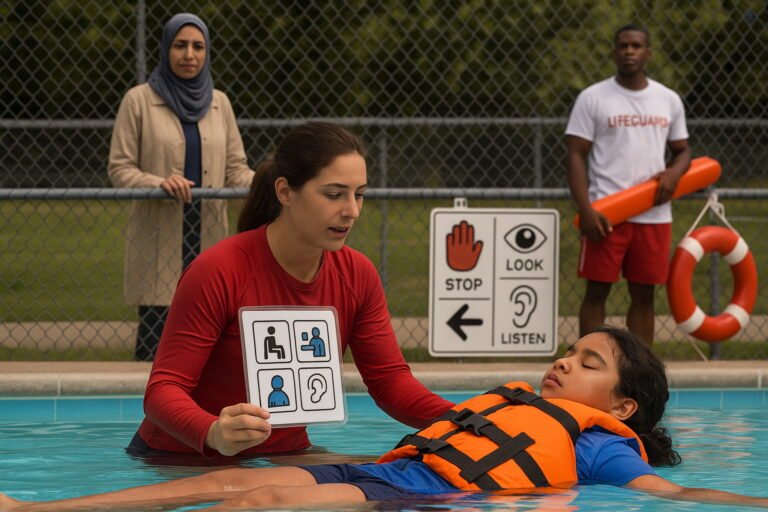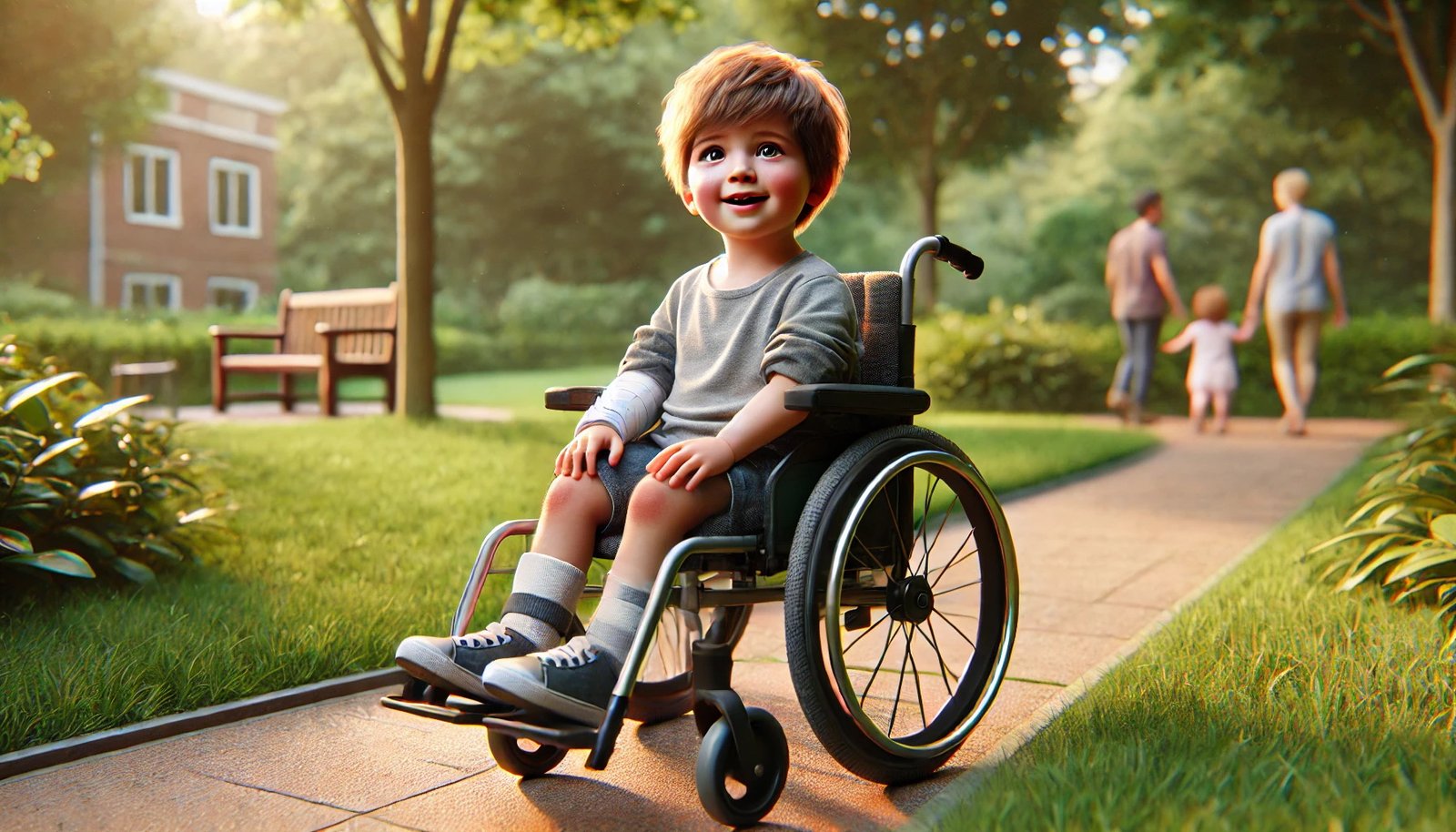Summary: Swimming and water safety are not an “extra” for the autistic community—they save lives. Globally, drowning causes about 236,000 deaths each year and ranks among the leading causes of death in children ages 5 to 14. World Health Organization+2World Health Organization+2
Why the Risk Is Higher in Autism
- Multiple studies show that, compared with their peers, autistic children and youth have a disproportionate risk of death by drowning. An analysis from Columbia University estimated that the risk of death by drowning is ~160 times higher than in the general pediatric population; the authors recommend prioritizing swim classes from the time of diagnosis. Mailman School of Public Health
- Elopement or “wandering” (leaving safe environments) is common: around 49% of autistic children have done so at least once, and many fatal incidents occur after they move toward nearby bodies of water. PubMed+1
- Descriptive studies of fatal cases identify ponds, lakes, and rivers as common settings, with peaks in warm months and a predominance among school-aged boys. PMC+1
Key conclusion: because of the combination of attraction to water, difficulty perceiving danger, and wandering, teaching swimming and floating is an essential preventive intervention.
Evidence and Programs That Work (and Are Already Growing)
Recent news coverage highlights specialized programs that adapt instruction (one-to-one, visual supports, clear communication, sensory-predictable environments) and show rapid progress in survival skills even in children with higher support needs. Initiatives like Autism Swim report that >1,400 professionals in more than 26 countries have completed their training since 2016, reflecting a global expansion of instructors using a neuroaffirming approach. AP News+2The Associated Press+2
What to Teach First (Minimum Safety Curriculum)
- Back floating / “roll-to-float” to breathe and call for help.
- Safe entries and exits (edges, ladders, shorelines).
- Basic rules: “stop–look–listen,” do not enter without an adult, recognize danger signs/pictograms.
- Near self-rescue: short propulsion to the edge; “reach or throw, don’t go” for bystanders.
- Proper use of life jackets in open-water environments. Guides from specialized organizations and lifesaving societies support these components and recommend CPR/first aid for caregivers. Autism Speaks+1
How Swim Lessons Should Be Adapted for Autism
The programs that work best share features you can request from the aquatic center:
- 1:1 (sometimes 2:1) ratio and instructors trained in autism; avoid whistles and sudden loud noises. WTOP News
- Visual supports (cards/pictograms), clear language, and predictable routines. Autism Speaks
- Gradual desensitization: begin with back floating, breathing, “roll-to-float,” and safe edge exits before strokes. CDC
- Regulated environment: quieter times, fewer stimuli, option for headphones or sensory breaks. WTOP News
- Focus on “water competence”: enter, float/roll, propel 25 m (per local standard), and exit the water with control. (CDC framework and Swim to Survive). CDC+1
How to Adapt Classes for Success Worldwide
- Format: one-to-one sessions or very small groups; short duration at first; gradual, predictable progression. AP News
- Visual supports and structure: schedules with pictograms, social stories, and transition previews. Autism Speaks
- Sensory accommodations: reduce noise/echo, allow headphones, choose quiet hours, water at a comfortable temperature. AP News
- Clear and literal communication, positive reinforcers, and planned breaks. Autism Speaks
- Staff training: modules specific to teaching people on the spectrum (e.g., Royal Life Saving + Autism Spectrum Australia). Royal Life Saving Society – Australia+1
Environment Safety (Home, School, Community)
- Physical barriers: four-sided fencing with self-closing/locking gates around pools; covers/locks on tanks and wells; door and water alarms.
- “Within arm’s reach” supervision whenever water is nearby.
- Response protocols: all family members and school staff trained in basic CPR.
- Mapping local risks: identify nearby ponds, canals, rivers, ditches, or cisterns and define safe routes.
These measures are consistently recommended by aquatic safety and autism organizations. Royal Life Saving Society – Australia+1
Equity and Access: Global Recommendations
- Low- and middle-income countries: over 90% of drowning deaths occur here; bringing water safety to public schools, community centers, and low-cost programs should be a priority. World Health Organization+1
- Contexts with open water (monsoons, riverbanks, wells): creating community crèches/daycares, teaching floating and basic rescue skills in local environments, and culturally tailored campaigns that demystify drowning have shown substantial reductions in rural settings. The Guardian
- World Drowning Prevention Day (July 25): an annual opportunity to activate policies, partnerships, and funding. United Nations
Checklist for Families and Schools
- Enroll as early as possible in adapted swim classes or request instructors trained in autism. autismswim.com.au+1
- Implement barriers + supervision + CPR; place rule pictograms near water. Royal Life Saving Society – Australia
- Practice briefly and frequently: floating, rolling, reaching the edge. Autism Speaks
- Inform the neighborhood/school about wandering and nearby risk areas. PubMed
In Summary:
Drowning is preventable, and systematic instruction in swimming and water safety saves lives in the autistic community. The evidence supports starting early, with sensory and communication adaptations and trained staff, while reinforcing environmental barriers and CPR. Making these practices standard—in every country—is an immediate investment in dignity, inclusion, and survival. Mailman School of Public Health+1












